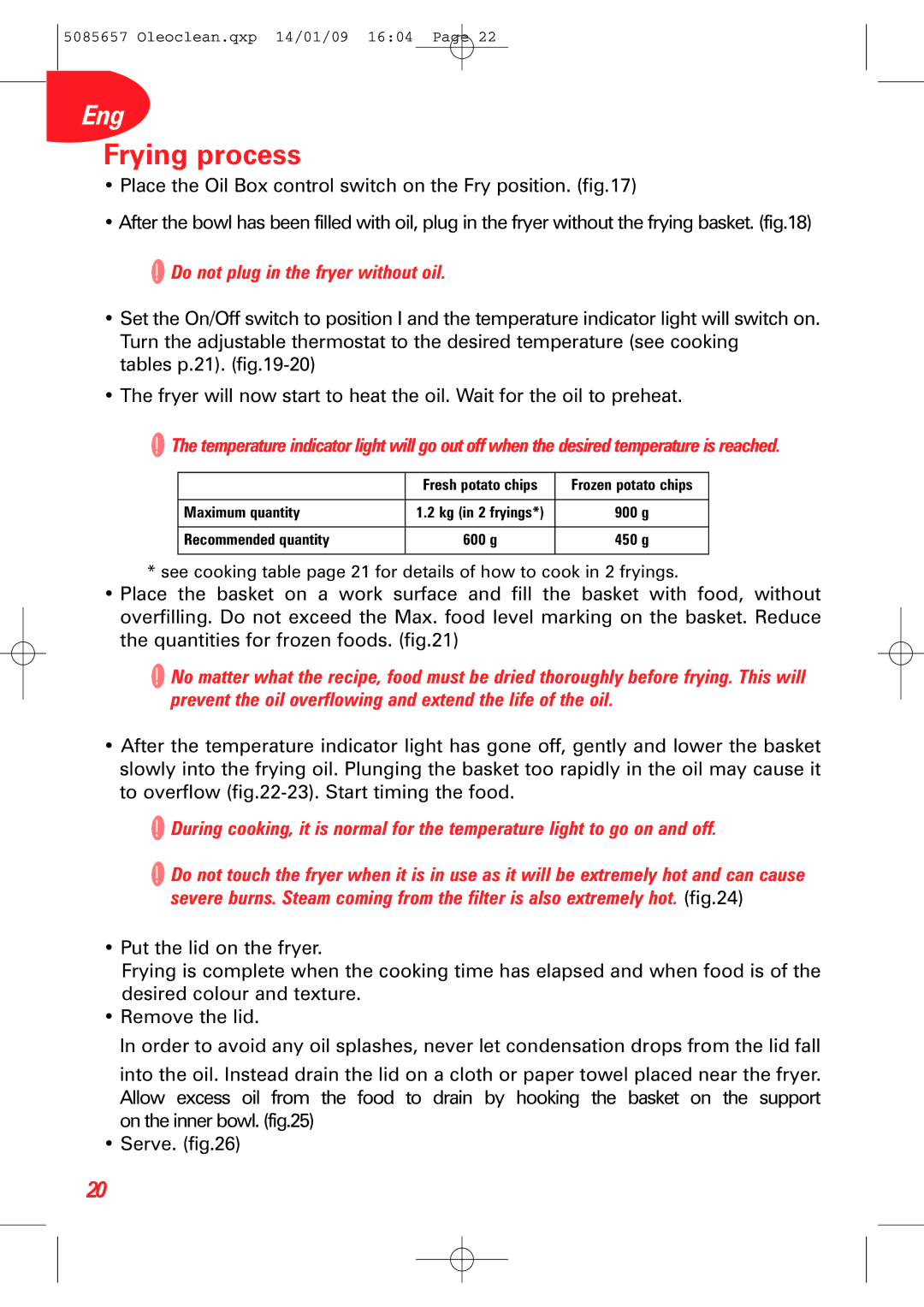FR701350, FR701350+, FR701330+, FR701370 specifications
The Tefal FR701370, FR701330+, FR701350+, and FR701350 are standout appliances in the world of air fryers, designed to elevate home cooking with modern technology and user-friendly features. These models are part of Tefal's extensive lineup, recognized for their ability to prepare delicious meals with significantly less oil, promoting healthier eating habits without compromising on taste.One of the key features of the Tefal air fryers is the unique "ActiFry" technology. This innovation utilizes a patented stirring paddle that ensures food is evenly cooked and crispy, providing exceptional results with minimal effort. The models distribute heat evenly, allowing for consistent cooking throughout, which is especially beneficial for dishes like chips, chicken wings, and vegetables.
The FR701370 model offers an easy-to-use digital interface, giving users control over cooking time and temperature. With a capacity to cook up to 1.2 kg of food, it is ideal for families or gatherings. This model also includes a range of preset cooking programs, allowing for quick selection tailored to specific meals, making it convenient for those who may be inexperienced in the kitchen.
The FR701330+ is specifically designed with a focus on versatility. It features a larger capacity, allowing for the preparation of more substantial meals. This model comes equipped with multiple cooking modes, including frying, roasting, and baking, making it a multifunctional appliance suitable for various culinary needs. The removable cooking bowl and paddle are dishwasher safe, simplifying cleanup after cooking.
The FR701350+ models continue the trend of user-friendly design, showcasing an intuitive touchscreen interface and enhanced recipes that cater to a diverse range of dietary requirements. With energy-efficient technology, these air fryers consume less power compared to traditional ovens, making them an environmentally friendly choice for cooking enthusiasts.
Overall, the Tefal FR701370, FR701330+, FR701350+, and FR701350 provide an ideal blend of innovation, functionality, and ease of use. Their ability to produce healthier meals while retaining flavors and textures makes them valuable additions to modern kitchens. Whether for everyday meals or special occasions, these air fryers empower users to explore new culinary horizons with confidence.

